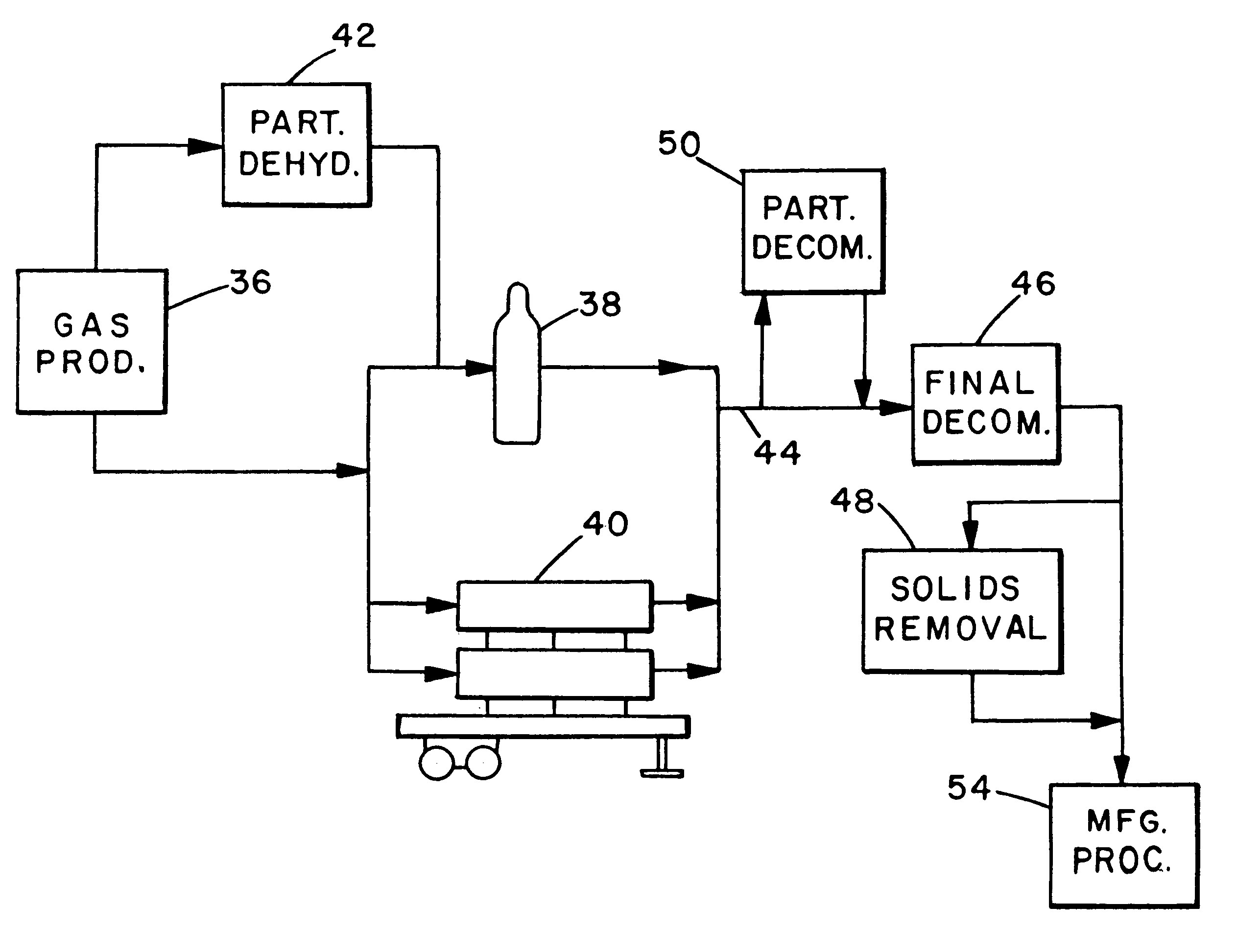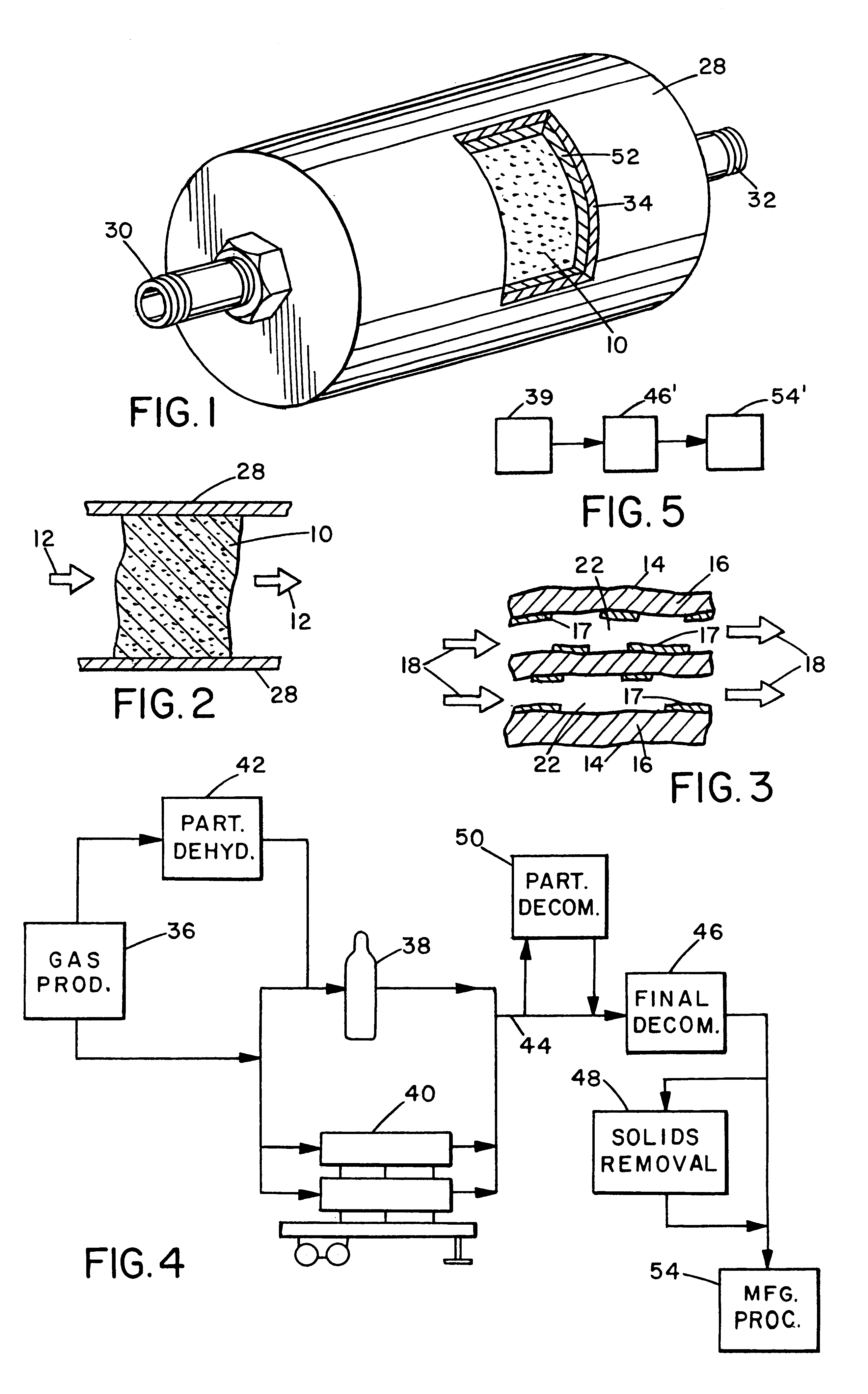Method and apparatus for purification of hydride gas streams
a technology of hydride gas and purification method, which is applied in the direction of hydrogen sulfide, electrostatic separation, hydrogen separation using solid contact, etc., can solve the problems of affecting the performance and operability of the integrated circuit, affecting the desired band gap properties, and prone to migration of copper
- Summary
- Abstract
- Description
- Claims
- Application Information
AI Technical Summary
Problems solved by technology
Method used
Image
Examples
Embodiment Construction
The critical aspect of the present invention is the use of an active high surface area metal oxide substrate for removal of gaseous contaminants, notably oxygen, carbon dioxide and water vapor, from a hydride gas stream. Reduction of contaminant level is to a level .ltoreq.100 ppb, preferably .ltoreq.50 ppb, and most preferably 10 ppb. (It is recognized that for some hydride gases, contaminant measuring equipment currently generally available may not be capable of measuring contaminant concentration as low as 10 ppb. However, for the purpose of this invention, it will be assumed that such equipment will be developed and will be available in due course. The availability, or lack thereof, of appropriate measuring equipment does not, however, alter the various levels of decontamination which are called for and can be achieved in the present invention.)
As noted above, many different metals and their oxides are useful in the present invention, as long as they have the requisite high surf...
PUM
| Property | Measurement | Unit |
|---|---|---|
| Length | aaaaa | aaaaa |
| Fraction | aaaaa | aaaaa |
| Fraction | aaaaa | aaaaa |
Abstract
Description
Claims
Application Information
 Login to View More
Login to View More - R&D
- Intellectual Property
- Life Sciences
- Materials
- Tech Scout
- Unparalleled Data Quality
- Higher Quality Content
- 60% Fewer Hallucinations
Browse by: Latest US Patents, China's latest patents, Technical Efficacy Thesaurus, Application Domain, Technology Topic, Popular Technical Reports.
© 2025 PatSnap. All rights reserved.Legal|Privacy policy|Modern Slavery Act Transparency Statement|Sitemap|About US| Contact US: help@patsnap.com


